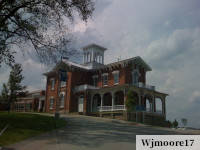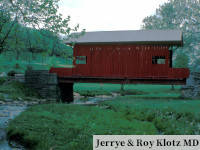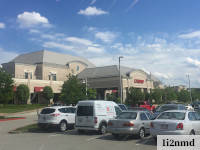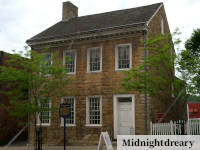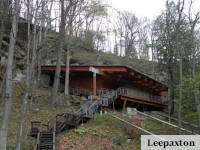Harvesting Valuable Hardwoods

Forests are green. Green for the environment, and green for the cash they bring to landowners who sell their trees, manufacturers that process tree products and people who work in the forest-products industry.
A large portion of Washington County is forested with hardwood trees. Public forests can be visited by going to Mingo Creek and Cross Creek county parks, hiking the Panhandle Trail, visiting Hillman State Park, using state game lands or by walking Montour Trail.
There are more privately owned forests than publicly held ones. Owned forests can be seen by driving through western and southern Washington County, although forests cover much of the county. People and companies that own forests can arrange to have their trees harvested. The trees may be purchased by timber buyers, sent to processing facilities and eventually be worked into beautiful, long-lasting furniture, cabinetry, flooring and millwork.
Those Washington County forests include 257,868 acres of local timberland, according to the U.S. Department of Agriculture’s Forest Inventory And Analysis (2019). Timberland is forest land that can produce more than 20 cubic feet per acre per year of building logs, fence posts, pilings, poles, rails and similar products.
Poplar, maple and oak are commonly found in the area, which has a diverse population of hardwoods. “Other common species found here are beech, sassafras, elm, basswood, black cherry, black oak, scarlet oak, white oak and black walnut,” John Hudson of Hudson Forestry Services wrote in an email. Located in New Castle, they serve landowners over a wide area that includes Washington County.
Not all those trees are equally valuable. Pennsylvania has more than 100 tree species. Most of them do not have commercial value.
The more valuable timber species are black walnut, red oak, sugar (hard) maple, black cherry, red (soft) maple, mixed oaks, and poplar (recently doing well).
Tony Quadro, professional forester
When timber buyers contact forest owners, the owners often call Russell Gibbs, a Service Forester with the PA Department of Conservation and Natural Resources (DCNR). A Service Forester makes recommendations about tree planting, educates people about non-commercial improvement harvests, and can consult with landowners about when to harvest their timber, how to have it harvested and what harvesting practices to avoid. They also teach landowners about invasive species.
Sales Process
The first step in selling timber is to inventory the species of trees available for harvest, their size – larger trees are more valuable – and the volume of trees. The age and quality of the trees is also important.
Trees with defects such as sweep, crook, many knots, rot, etc., are not as valuable as straight, clear lumber.
John Hudson
Completing the inventory leads to an accurate assessment of the value of the trees. The work logging companies must do to reach the trees, cut them down and transport them to a processing facility also affects the price.
Buyers will usually make a lump sum offer for the trees.
“The most common harvest to AVOID is called a diameter-limit harvest or a high-grade harvest,” Gibbs wrote. A diameter-limit harvest is short-sighted. It hurts the sustainability of the forest. It leaves landowners with poor grade trees. It damages the investment value of the forest.
Landowners are encouraged to hire a consulting forester to provide an independent estimate. A consulting forester can recommend which trees to sell, seek additional offers, advise on the timber sales agreement and supervise the harvest. Outside of the harvest, they can help keep the forest sustainable by thinning young stands of trees, regenerating mature stands, managing wildlife, laying out roads and trails, and setting up for a harvest.
Best thing to do first is to get a forest management plan. This provides usually a ten year plan for management of their woodlot.
Tony Quadro
Studying PennState Extension’s lengthy report, Valuing Standing Timber, can increase a landowner’s chance of selling at a fair market price.
See a step-by-step infographic.
Jobs
More than 60,000 people work in the forest-products industry in PA. They work 1 of every 9 manufacturing jobs in the state, making PA the leading hardwood-producing state in the U.S. The industry brings $36 billion a year to the state economy.
Jobs are available. The PA Hardwood Development Council connects people to available positions. Openings may be available for job-seekers who:
- Want to be outside,
- Enjoy handling administrative tasks inside,
- Want to do research,
- Prefer to operate heavy machinery, or
- See themselves as doing craftsmanship
The website indicates that jobs are available for people with no experience in the field.
Environment
Forests are important because trees produce oxygen that renews the earth’s air supply. One tree can produce a couple hundred pounds of oxygen annually. Some people have referred to forests as “earth’s lungs”.
Forests are also bio-diverse, or home to a variety of animals and other plants – cherry, oak, walnut and hickory trees are excellent for bears, squirrels, turkey and deer – leading foresters to encourage sustainable forestry.
“Sustainable forestry encompasses social, ethical, ecological, and economic factors,” PennState Extension wrote on its website.
A sustainable approach to forestry takes into account the animals, recreational opportunities, jobs and community involvement. It suggests that landowners can harvest timber for the cash while maintaining forests for future generations.
Future
Washington County is a good market area for timber right now, Quadro wrote.
The presence of I-79 and I-70 make the transport of logs to processing facilities convenient to “timber buyers from West Virginia and Ohio as well as the northern regions of Pennsylvania,” Hudson wrote. There are no sawmills in Washington County.
I believe there is room for growth in Washington County.
Russell Gibbs
Forests provide places for animals to live, humans to enjoy recreation, landowners to cash out their trees, workers to have jobs and the forest-product industry to be good for the economy.
Wood is a renewable resource.
Sustainable forestry keeps the forests in place for the future.
This article was published in


